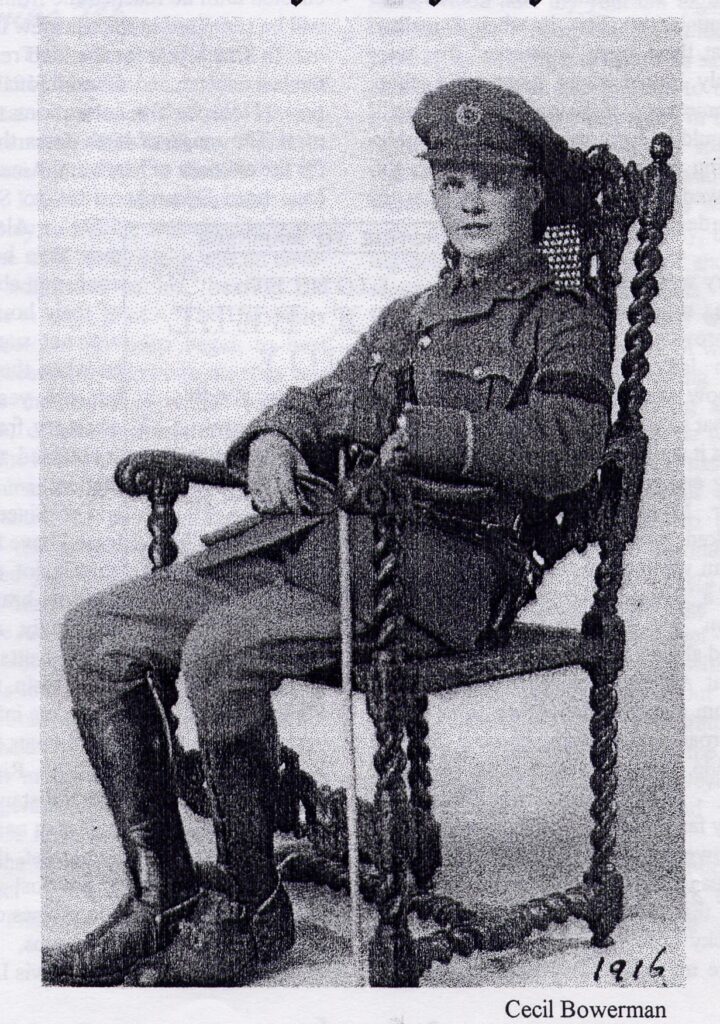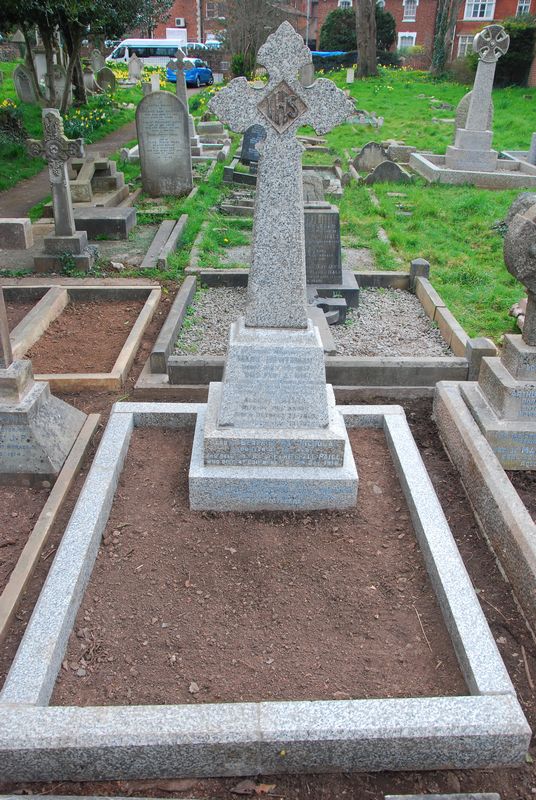Information and pictures about Cecil Bowerman has been kindly suppled by Kathy Reynolds and Lisa Bowerman. For a more extensive biography, see our book on the First World War.

Cecil Bowerman was born on 28 November 1896 to Mark and Amelia Bowerman, one of a grand total of 13 children. He was baptised in St John’s Church on 3 February 1897 and the family are recorded as living just across the road in Church Street. Mark Bowerman was a timber merchant, whose yard was in Colley Lane. By 1901, they had moved to 11 Castle Street. On 17 January 1907 Cecil was admitted to Dr Morgan’s Grammar School (the precursor of Haygrove) and left on 30 September 1910 to attend boarding school in Winchester.

He joined the North Somerset Yeomanry around 1912, serving as a territorial soldier. At the outbreak of the First World War, he volunteered for overseas service and saw action in France. In a letter from November 1914, published in the Bridgwater Independent, Cecil described trench warfare and an intense German attack.
Though initially a trooper, Cecil later transferred to the Royal Engineers, quickly rising through the ranks to temporary captain and eventually acting major. He was awarded the Belgian Croix de Guerre for his distinguished service. After demobilisation, Cecil resumed civilian life, marrying Florence King in 1923 and having a son. He became managing director of the Somerset Trading Company and held prominent civic roles, including president of the Bridgwater Chamber of Commerce.
Despite professional success, Cecil’s life ended in tragedy. In 1935, aged just 38, he died by suicide at Brislington House, a psychiatric hospital in Bristol. Though not officially recognised as a war casualty, Cecil’s death highlights the enduring psychological toll of war. The long-term trauma he likely endured—common among veterans—reflects a broader, often hidden legacy of the First World War. While many ex-servicemen faced challenges such as unemployment and post-traumatic stress, their suffering frequently went unrecorded and unacknowledged.
Cecil’s story reminds us that the war’s impact did not end with peace. Thousands who survived combat would later succumb to its psychological aftermath. These men, like Cecil, may not appear on memorials, but their lives were nonetheless claimed by war. The conflict’s scars endured not only in soldiers but in the families and communities that supported and mourned them.

I. Croix de Guerre (Belgium) 1914-1918
Awarded when temporary lieutenant (acting Captain) in the Royal Engineers for distinguished service rendered.
2. 1914 Star
This medal was awarded to the first 400.000 'Old Contemptibles' who were part of the first British Expeditionary Force into Belgium (before conscription). There was another Star, which looks very similar, but issued later for those who gave service during the period 1914-1915 but were not part of the BEF.
2.1 'In Action Bar'
There is an 'In Action Bar' missing from the 1914 Star medal (which is shown on the miniature), evidence of serving under enemy fire.
3. Victory Medal 1914-19
4. British War Medal 1914-1920
5. Identity tag
6. 3 x Proficiency medals 1912
Probably from the North Somerset Yeomanry Regiment.

